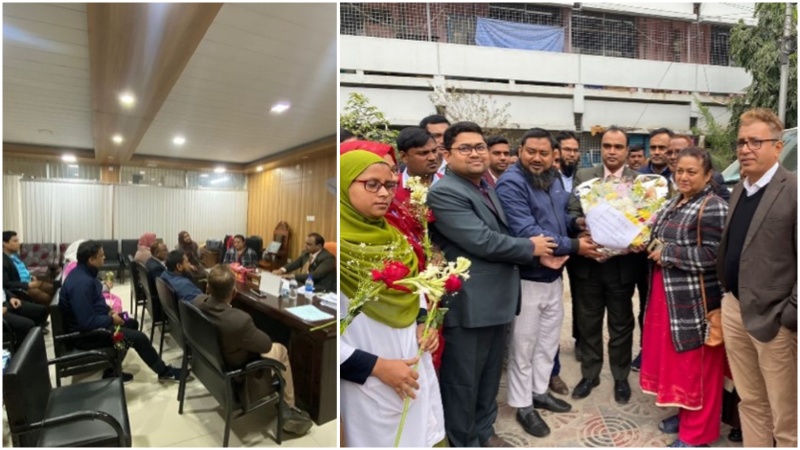Bangladesh: UNODC strengthens national HIV Programme integration in Sirajganj district's public health facility

Sirajgunj, Bangladesh/17 January 2024: In the relentless pursuit of a healthier and more inclusive future, Bangladesh stands at a crucial juncture in its commitment to integrate all HIV services into public health facilities by 2030. However, challenges persist, as public health service providers remain under equipped to integrate HIV services effectively, especially for key populations (KPs).
Recognizing this challenge, the National AIDS/STD Programme (NASP), Directorate General-Health Services (DG-HS), Ministry of Health and Family Welfare (MoH&FW), has undertaken a pioneering initiative. Piloting HIV service integration in selected districts, NASP collaborates with implementing civil society partners and community-based organizations. The United Nations Joint Team on HIV/AIDS—of which UNODC is an active member--provides crucial technical and expertise support.
As part of these efforts, an expert mission to Sirajganj district was conducted, along with representatives of the National AIDS/STD programme and Ministry of Health and Family welfare, UNAIDS and civil society. UNODC’s HIV expert provided technical inputs and recommendations for a pilot intervention seeking to ensure effective integration of HIV programming and services into public health facilities. The primary objective was to provide recommendations and technical inputs for further improvement.
Beneficiary reflections shed light on the progress made and the challenges faced in the early stages of this transformative intervention. The Hospital Focal Person of Sirajganj District Hospital noted a gradual improvement, particularly highlighting the increasing ownership of hospital authorities and their deepening understanding of HIV prevention, including a harm reduction approach as a public health issue.
The in-charge of the Service Centre at Sirajganj District Hospital emphasized the establishment of good coordination between hospital-based staff and outreach workers. This coordination, deemed crucial, ensures maximum outreach to key populations with clinical and outreach services. The synergy between these components becomes a cornerstone for the success of the integration.
A group of People Who Inject Drugs (PWIDs) and People Living with HIV (PLHIV) among PWIDs conveyed a mixed sentiment. While expressing happiness about the keen interest of hospital authorities in ensuring uninterrupted HIV services, including treatment, care, and support for key populations and the general population, they also voiced concerns about potential issues related to status disclosure.
The journey towards HIV service integration is undoubtedly challenging, but these beneficiary reflections offer a glimpse into the positive changes already underway. The commitment of hospital authorities and the coordination between different service providers signify progress in the right direction.
The activity contributed to SDG 3, SDG 5, SDG 16 and SDG 17: https://sdg-tracker.org/
(Supported by National AIDS/STD Programme)